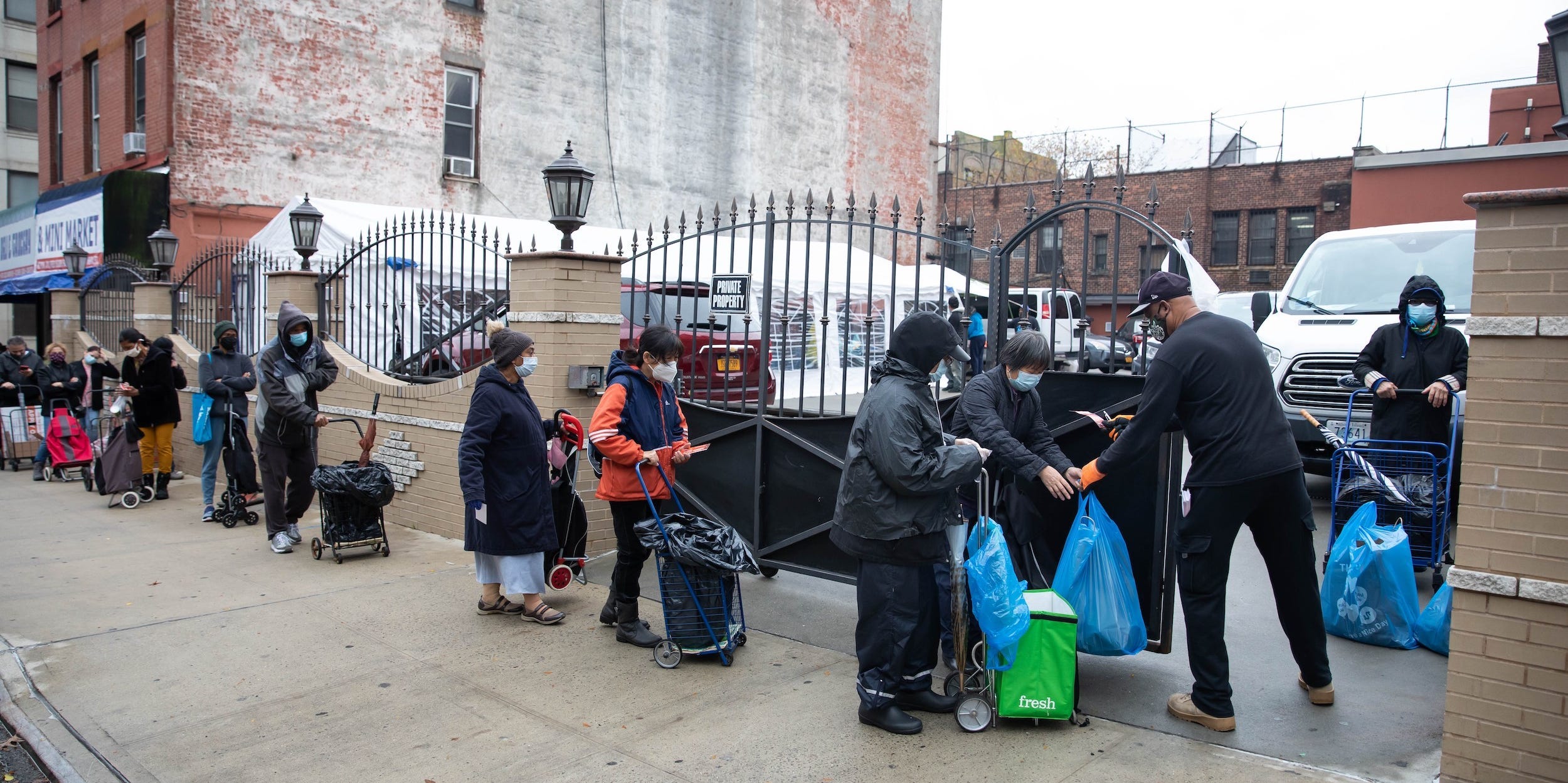
Michael Nagle/Wang Ying/Xinhua/Getty Images
- Roughly 54 million people fell out of the global middle class during the pandemic recession, Pew data shows.
- About 152 million people sank into the lower-income class or into poverty, reversing years of improvement.
- Poorer economies saw the biggest losses, adding to the global recovery's K-shaped trend.
- See more stories on Insider's business page.
As economies turn toward reopening and recovery, the coronavirus' economic toll is coming into focus. The picture is incredibly bleak.
The distribution of COVID-19 vaccines presents a clear end to the pandemic, but new data from the Pew Research Center suggests that returning to pre-pandemic unemployment levels is only the first step toward a full rebound. The firm estimates that 54 million more people fell out of the global middle class in 2020 than would have had the pandemic not emerged.
The classification includes people who live on $10 to $20 a day, or those who earn roughly $14,600 to $29,200 a year. That spread straddles the US poverty line and is well below median earnings in advanced economies.
That decline would've been larger had China, which is home to more than one-third of the world's middle class, not avoided a recession, Rakesh Kochhar, senior researcher at Pew, said. Still, growth in that country has slowed significantly as it faces obstacles to vaccinating its huge population.
Separately, about 152 million people fell from the global upper and middle class into the lower class and poverty. Pew's definition of global poverty encompasses those living on less than $2 a day, or earning less than $2,920 a year for a family of four.
Like other aspects of the economic downturn, the pandemic's negative effects have driven an uneven, K-shaped recovery. Middle-class dropouts were most concentrated in South Asia, East Asia, and the Pacific, as those regions saw growth in that cohort stall well before the pandemic hit. The increase in those classified as "poor" was primarily seen in India and Sub-Saharan Africa, reversing years of progress and plunging the regions into new economic pain, Kochhar said.
The regional disparities reflect observations made by the International Monetary Fund in its latest economic projections. The organization expects emerging-market and low-income economies to "suffer more significant medium-term losses," as they lack the fiscal firepower to power a stronger recovery. Countries with large dependencies on the tourism industry also risk prolonged downturns, the IMF said.
"Recoveries are diverging dangerously across and within countries," wrote Gita Gopinath, chief economist for the IMF.
At the same time, data collected by Bloomberg show wealthier countries vaccinating 25 times faster than the world's poorest nations. Advanced economies snapped up doses throughout the fall, creating a shortage that further inflames the recovery's K-shaped trend.
To be sure, the pandemic only exacerbated trends seen for many years. Most of the world's population landed in either the low-income or poor groups before the health crisis, while high-earners made up the smallest group. Yet the virus's damage to service jobs, which are primarily staffed by minorities, low-earners, and women, widened the gaps.
That's not to say progress can't be made. The global middle-class population grew by 54 million people annually on average from 2011 to 2019. The pandemic only erased a year of gains at that pace.
Poverty, however, jumped by 131 million people in 2020 after falling at an average annual rate of 49 million people, according to Pew. The setback signals that, at the pre-pandemic pace of improvement, it will still take years to rebound.
